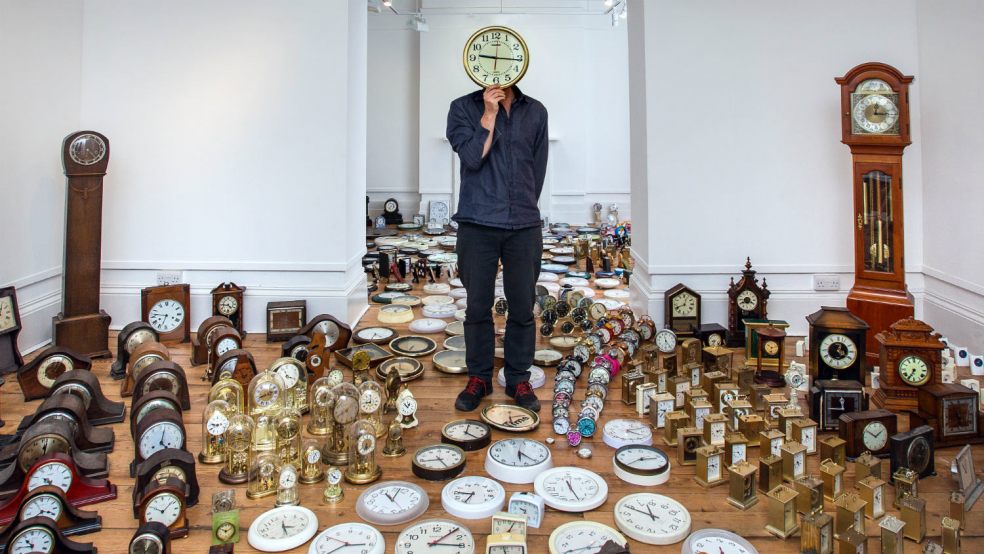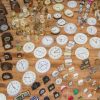
Castle Drogo calls for 500 clocks in time for art installation
As we put the clocks forward this weekend, the National Trust’s Castle Drogo is inviting people to donate their unwanted clocks to become part of a new contemporary art installation, ‘Harrison’s Garden,’ by internationally renowned artist Luke Jerram, that will be on display at the castle from 14 July.
The countdown to collect timepieces starts this Sunday, 26 March, as Castle Drogo hopes to gather over 500 ticking treasures from the public by 7 July. The 500 clocks will join 2000 clocks already part of the installation that will go on display. ‘Harrison’s Garden’ promises to be a spectacle for the eyes and ears as the clocks will be clustered to form patterns and shapes along the floors and surfaces and set to different times, so that visitors will hear a musical delight of ticking, clicking and chiming throughout the day.
Clocks of any colour, size and age are welcome to feature in the collection, whether it’s a quirky piece found in the local junk shop or an old family favourite. Clocks can be donated by dropping them off at the Castle Drogo Visitor Centre until Friday 7 July.
Louise Donovan, Programme Manager at the castle, said, ‘The clocks don’t need to work to be donated and we’re hoping people will want to share any stories that might go with the clock they bring. The clocks will become a permanent part of the travelling Harrison’s Garden installation.’
The installation has taken inspiration from the clock maker John Harrison. Harrison was born at Nostell Priory (National Trust) in 1693, the son of the then estate carpenter and is known today as one of England’s greatest inventors for creating the marine chronometer, which made it possible to tell the time at sea.
Donated clocks will be joined by Castle Drogo’s collection of clocks, including an impressive long case clock. The clocks were all owned by the Drewe family who built the castle 100 years ago.
‘Harrison’s Garden’ will be installed on the anniversary of the death of the Drewe’s eldest son, Adrian, who died during World War One on the front line at Ypres on 12th July 1917. The installation will be ready to open to the public on 14th July.
Luke Jerram, a creator of sculptures, installations and live arts projects across the globe, is excited to see ‘Harrison’s Garden’ expand in size and sound as it spreads across historic National Trust spaces. The display is currently visiting Nostell Priory, a National Trust property near Wakefield and the artwork is also set to appear at Gunby Hall in Lincolnshire and Penrhyn Castle in Wales, with each place asking their local communities to donate 500 additional clocks.
The touring installation is part of Trust New Art, the National Trust’s contemporary arts programme which invites visitors to experience our places from a different perspective.
Rebecca Glover, Visitor Services Manager at Castle Drogo said, ‘We hope to gather an array of different clocks and that the community can help us in our quest to find an additional 500 timepieces.
There are many clocks in the Castle Drogo collection and we’ve used them to highlight stories of the family as part of this year’s theme, ‘Changing Times,’ which really fits with the Harrison’s Garden installation. Some of the re-displayed rooms this year focus on how the Drewe’s lives changed during the twentieth century, and others reflect on a ‘parallel timeline’ of history between the original construction of the castle and our current building conservation project.”
This year in the Drawing Room the collection has been redisplayed to tell the stories of how the Drewe’s lives changed through time. Visitors can find out about how the lives of the five Drewe children, Adrian, Basil, Cedric, Mary and Frances changed because of the First World War and what happened to them as the twentieth century progressed.
Further information about ‘Harrison’s Garden’ and how to donate clocks can be found at www.nationaltrust.org.uk/castle-drogo














